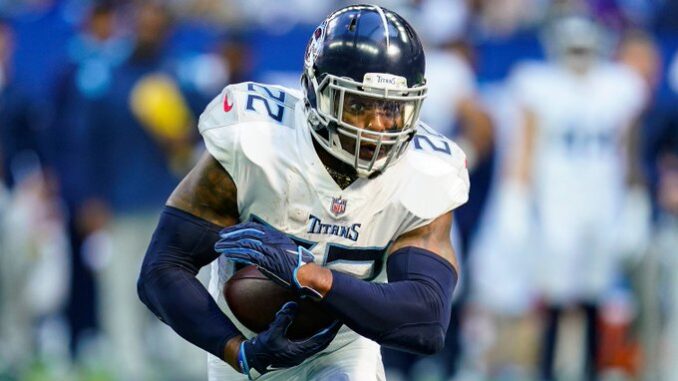
Analyzing the Cowboys Running Back Problem
Analyzing the Cowboys Running Back Problem
The Dallas Cowboys haven’t finished in the top five in running yards since 2019.
Dallas’ once-dominant running game has been declining, but this year it took a dramatic drop,
costing the Cowboys in the end.
Last Sunday, starting running backs Tony Pollard and Rico Dowdle combined for only 17 carries and 67 yards.
The longest run from either guy was only 11 yards. That will not help you win games.
Consider the best Cowboys teams of the last decade: 2014 with DeMarco Murray,
2016 with then-rookie Ezekiel Elliott, and 2018 with Elliott, when Dallas won the division and a playoff game.
The numbers do not lie. The Cowboys have performed best when a bell-cow running back takes the weight off Dak Prescott.

It expands the play-action game, wears down the opposition, and kills the clock when it counts the most.
Dallas currently does not have that man. They have a significant running back problem, and with two of their starters poised to hit free agency, they will need to answer many questions quickly.
Tony Pollard’s Decision
Tony Pollard’s decision to take up RB1 on his own for the first time in his career generated a lot of buzz. Unfortunately, the hype fell hollow.
Pollard had an excellent 2022. He reached 1,000 running yards, averaged more than five yards per carry, scored nine touchdowns, and did not fumble once.
Perhaps most amazingly, he accomplished this while only starting four games, as Elliott remained at the top of the depth chart.
One year later, Pollard had fewer rushing yards on 59 more carries, three fumbles, and three fewer touchdowns, despite starting all 17 games for Dallas.
That is not what the Cowboys had hoped for.
He was on the franchise tag this season, therefore he is scheduled to become a free agency. This brings us to our first major concern.
Can you extend a running back coming off a bad season?
Was his success due to the change-of-pace relationship with Elliott?
If he is not re-signed, who will take his place?
We’ve seen how quickly running backs can fade in this league. Think of Dalvin Cook, Alvin Kamara, Austin Ekeler, and, dare I say it, Zeke Elliott.
The danger of signing Pollard to a multi-year contract is too large, while Dowdle is younger, more cheap, stronger, and nearly as explosive as Pollard.
Dallas was not moved by the Elliott ruling, and they should not be here either; it is time to move on from Pollard and start over.
Free Agent Options
It seems counterproductive to let Pollard go due to wear and tear just to sign a free agent of comparable age later.
Guys like Ekeler, Josh Jacobs, D’Andre Swift, and Devin Singletary just don’t thrill me. None of those players contribute much beyond what Pollard does.
Not to mention, those guys may receive equal to or greater compensation than the Cowboys would offer Pollard.
J.K. Dobbins is a name with a lot of potential; he is coming off an Achilles tear, his second big injury after rupturing his ACL in 2021.
Is Dobbins prone to injury or simply unlucky?
If Dallas evaluates his medicals positively, he might be a free agent target to combine alongside Dowdle.
While I see Dobbins as a viable choice here, he is not the “golden goose.” That would be Titans icon and three-time All-Pro Derrick Henry.
Henry consistently defies his father.
In a position where players often fall off in their mid-to-late 20s, “King Henry” just put up 1,167 yards and 12 touchdowns in his age-29 season.
This man isn’t done yet, and his punishing running style could be just what the Cowboys need to re-energize their rushing attack.
A deal for Henry would be for about two years; given that he has now eclipsed 2,000 career rushes, teams are unlikely to commit to him in the long run.
That works for Dallas, though; this is their window, and they need a player like him to deliver one or two strong seasons.
Not to add, they expressed interest in Henry through trade as late as October.
Two years, $24 million or thereabouts, is a deal that benefits both parties; don’t let salary cap fears deceive you; the Cowboys can afford it.
This move not only gives you a clear RB1, but it also allows you to focus on other draft needs.
Instead of drafting a skill position, strengthen up the offensive and defensive lines in the early rounds.
Building from within.
The move that generates the least amount of excitement among supporters may really be the most plausible.
Dallas might look at the pieces they have in-house and opt to run it back with those players. This might include Pollard, or it could be Dowdle and Malik Davis leading a young, inexperienced backfield.
This is certainly the riskiest option, but it is also the most cost-effective and has the potential to be quite profitable.
Year after year, “no-name” running backs emerge, and Dowdle and Davis have shown sparks.
In this situation, Dallas is likely to select a running back in the later stages of the draft to complete out the roster and have a genuine camp competition to determine who earns the starting job in September.
Don’t forget, that’s how the Broncos discovered Terrell Davis.
Dallas must address the position, regardless of how they choose to do so. You have to point at someone and say, “This is our guy.”
No rumors weeks before the season; get your guy in place and create trust in this running offense.
Get more related news on https://dailysportnews.co.uk

Leave a Reply